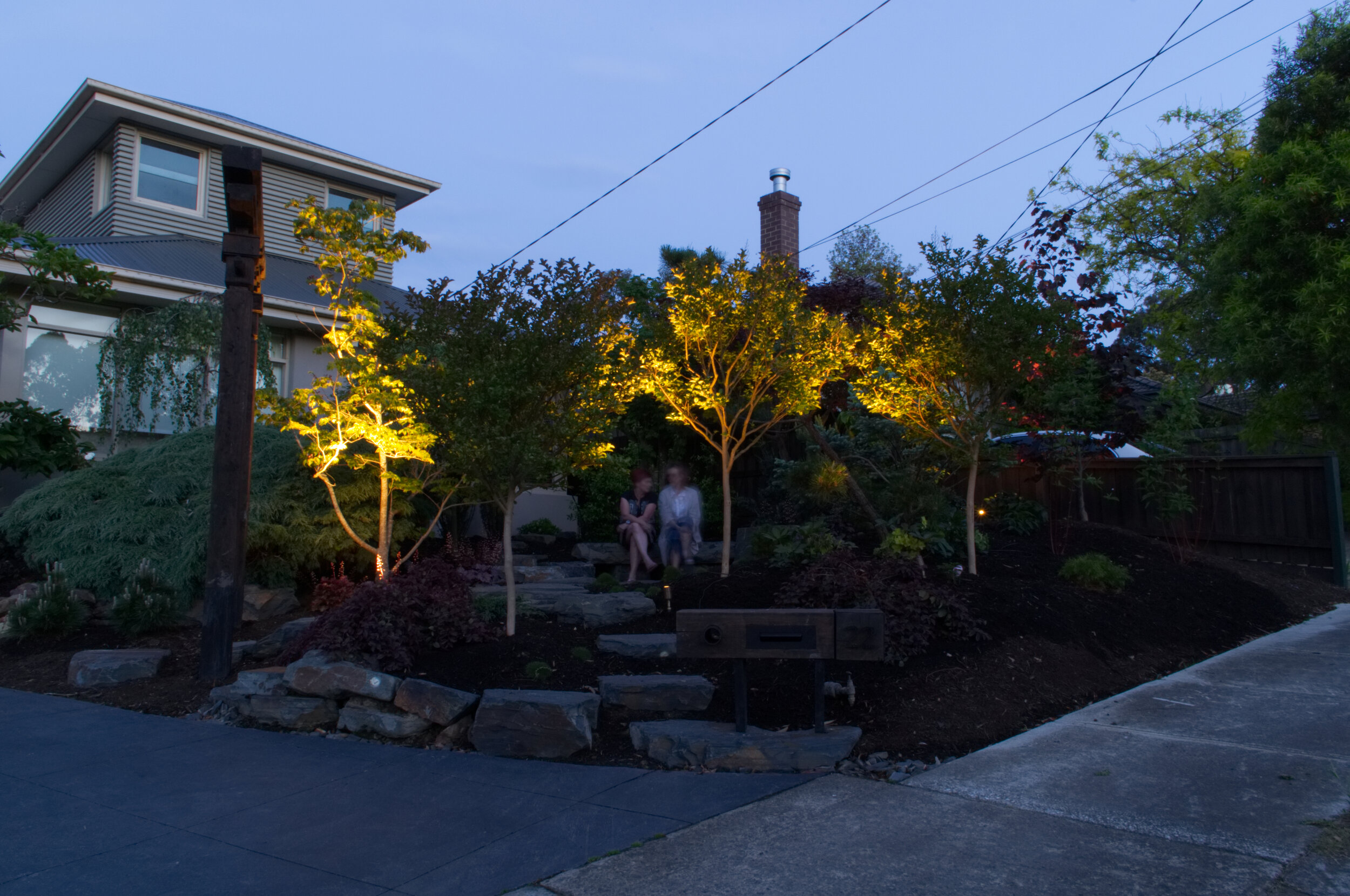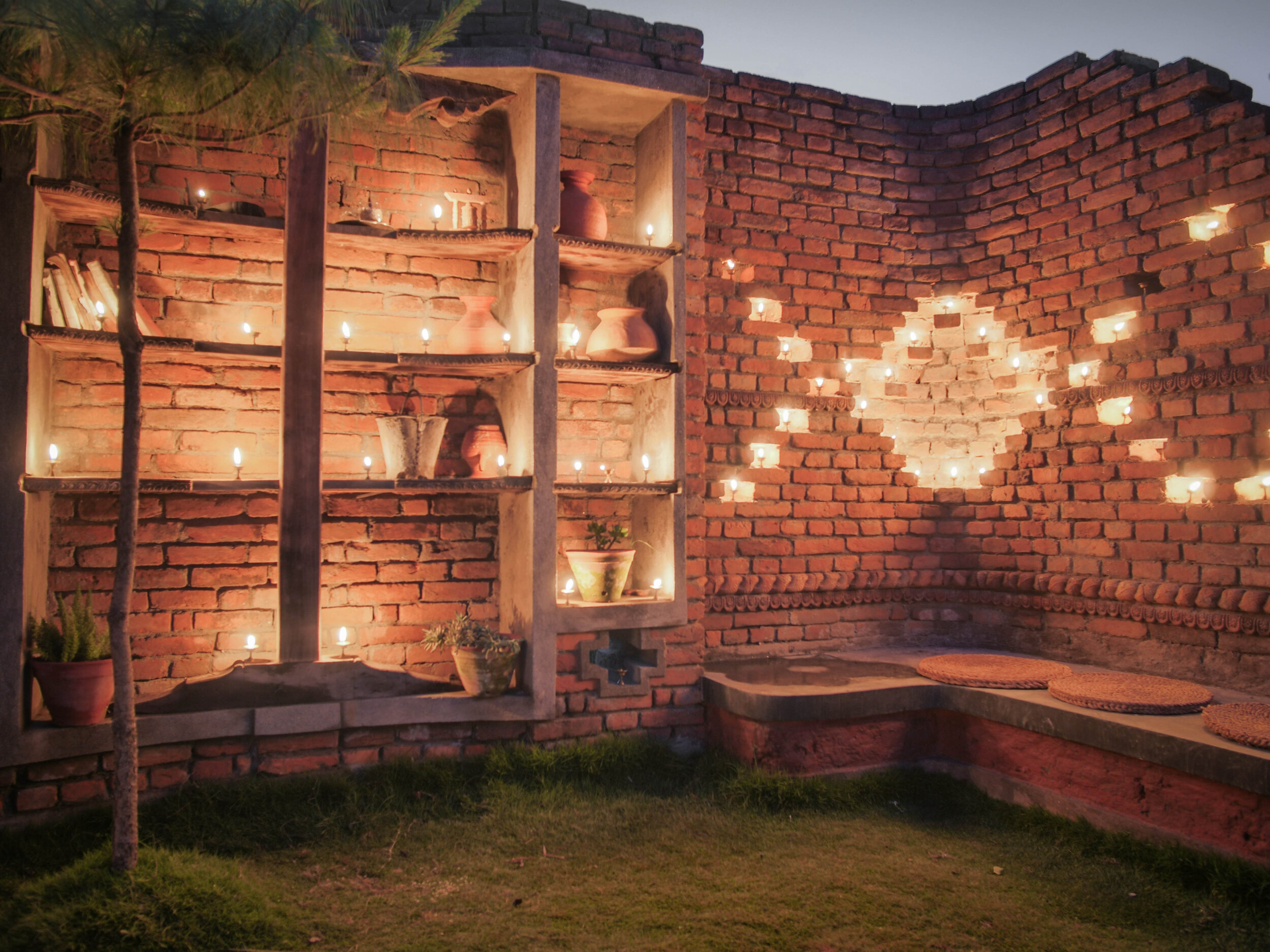Lighting
Using lighting in the landscape
What are the objectives of lighting in the garden?
Generally we are either lighting for function / safety or for aesthetics. The addition of lighting to a landscape can be very beneficial to the home owners. Often in the winter it is dark when we leave the house and dark again before we get home. Well done lighting allows us to appreciate and feel connected to our landscape throughout this time.
Lighting for Safety
Access - Coming home at night we want to be able to move from the car or the footpath to the front door easily. Path lights and wall lights can be used to make it easy to get in hastily with your shopping bags.
Staircases - These can be trip hazards. The last thing you want late at night when you take something out to the bins is to have to negotiate a staircase in the dark. These lights can be shone across the stair treads individually, be mounted underneath the stair treads as strip lights or a flood light can be used from above.
Carparks - On commercial projects car parks can be scary spaces to be without adequate lighting.
Lighting for Aesthetics
Structures
Focal Points - We can use lights to lead the eye to a focal point in a landscape in the evening.
Features and sculptures - Light can pull focus to features and sculptures so that you can enjoy them from inside in the evening.
Walls and walling - Wall lights can be used to pull focus to doorways, light up plants surrounding it and sometimes to bring focus to the walling if the materials are nice enough to show off.
Plants
Up-lighting - Highlighting the plants foliage. When using up-lighting on foliage we must manage the distance away from the plant that we place the light. When lights are too close to plants, we can get an undesirable white splash on them.
Down-lighting - Casting shadows of moving leaves is a wonderful way to bring a site to a life with movement.
Choosing light fittings
When choosing light fittings there are many factors that will be part of our decision-making process:
Durability and waterproof nature of fittings
Salt resistance
Power output
Power consumption
Colour or temperature
Would you prefer to hide the fitting
Telescopic fittings to
Ease of installation
Colour temperature
Outdoors warmer lighting can be used than indoors. It can be more of an accent and artistic approach rather than completely functional.
For lighting colour we have a temperature scale called the Kelvin Scale
2000K -3000K = Warm
3000K to 4500K = Cool
5000K - 6000K = Daylight
Installation
Now with low voltage LED there is often no need for an electrician if you have a suitable outdoor PowerPoint or you can lay cable from inside to out.
Maintenance
Choosing well-made fittings from good materials is most important for this
I recommend choosing fittings from stores that have a standard range that doesn’t change often so that you can get replacement parts in the future.
Session Outline
Lighting for safety
Lighting for aesthetics
Installation
Maintenance


